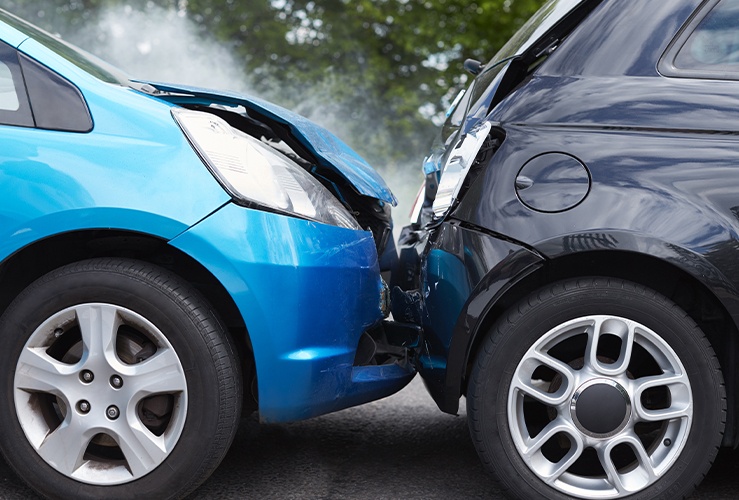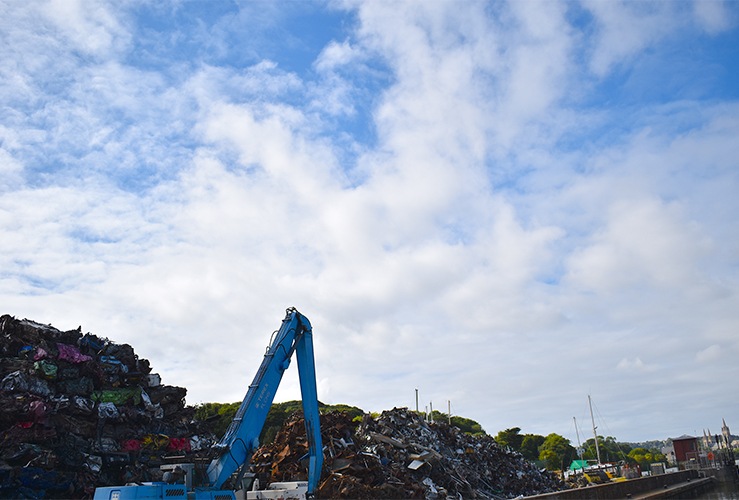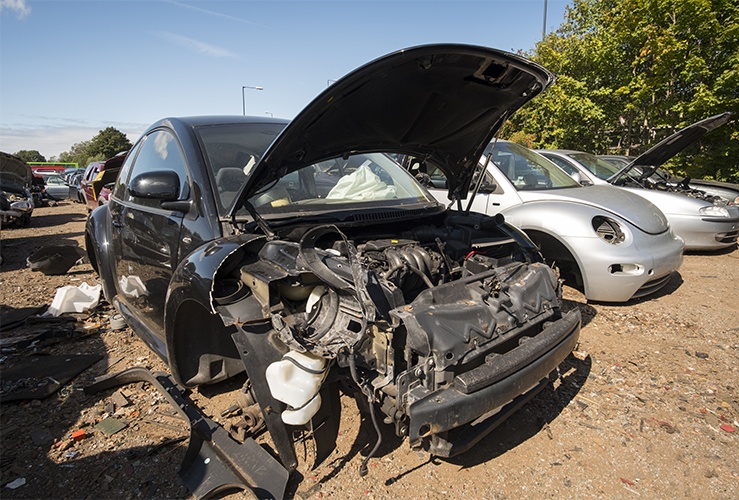If you’re reading this, the chances are that you have come across the motoring terms, Cat C or Cat D but are unsure exactly what they are.
So, what is Cat C? What is Cat D?
Exactly what does cat C mean and what does cat D mean?
These questions might arise if you're learning to drive; looking for a second-hand car; or if you’ve been involved in a collision and a claim needs to be made.
In short, these are now-defunct terms for cars that have been damaged but may be allowed on the road again after sufficient repairs.
Let’s look at the various insurance write-off categories in more detail, including why it still might be worth considering purchasing a vehicle that has been declared a cat d (now cat n) insurance write-off...
Insurance write-off categories - at-a-glance
There are four insurance write-off categories
- Cat A meaning - Cars labelled category A have sustained such serious damage that they cannot be driven ever again. They are in such a poor state that even individual components cannot be sold off. Insurers deem category A as beyond repair.
- Cat B meaning - A category B car is also very badly damaged - and also can never be driven again. However, individual parts may be sold off, including, potentially, the engine. But the body shell can never be used again.
- Cat S meaning - Category S (formerly C) vehicles may have suffered some kind of structural damage but it is possible to repair them and put them back on the road.
- Cat N meaning - If a car is categorised as Cat N (formerly Cat D), no structural damage has been sustained. but it has suffered damage which must be repaired before the car can return to the public road.
Old insurance write-off categories
‘Cat C’ and ‘Cat D’ were two insurance categories used to describe damaged (technically written-off) cars that were changed in 2017.
- Cat C: This category was replaced by Cat S
- Cat D: This category was replaced by Cat N

What does Cat C mean? - Cat S car meaning (formerly Cat C car meaning)
Category C cars are now known as Category S.
The ‘S’ means ‘Structurally Damaged’.
This means there has been structural damage to the vehicle - such as to the chassis or suspension - but repairs are possible.
However, the insurer is likely to view the cost of repairs as uneconomical and therefore declare the damaged car Cat S (Cat C), meaning it is a write off.
Do Cat C (Cat S) cars have to be re-registered with the DVLA?
Cat S cars (Cat C cars) must be re-registered with the DVLA.
What does Cat D mean? - Cat N car meaning (formerly Cat D car meaning)
This is the least severe of all categories.
Category D cars are now known as Category N.
The ‘N’ means ‘Non-structural’.
‘Non-structural’ damage means that a car’s structural frame or chassis have not been damaged in an accident
What is Cat N (Cat D) damage?
Can N / Cat D insurance damage might include critical elements such as steering or brakes as well as things like lights and the infotainment system.
Cars classified as Cat N will have minor damage which must be repaired by a professional before the car can return to the public road.
Do Cat D (Cat N) cars have to be re-registered with the DVLA?
Once identified as having less severe damage, the car may be classified as a Cat N car (Cat D car), meaning it does not need to be re-registered with the DVLA.
Why change the category names?
Previously, whether repairable salvage was categorised as a category C car or a category D car depended on the repair costs compared to the pre-accident value.
This is not the meaning of the replacement S and N categories, which are applied based simply on the type of damage sustained, without any comparison between the cost and value.
Are there any changes to the V5C document when a car has been declared as a Cat S or Cat N vehicle?
If a car has been classified as either Cat S or Cat N, the V5C document will be marked with an ‘S’ - which means the vehicle has been salvaged.
This makes it easier for prospective buyers of used cars to identify a car’s write off history.
What about Cat A and Cat B?
There are also Cat A and Cat B - and these have kept their original category letters.
Cat A and Cat B are the most severe categories of “write off”.
Cat A cars: Can a vehicle declared as Cat A still be used on the roads?
Any vehicle labelled Cat A cannot be used on the road again.
The vehicle is in such an unsafe, poor condition that it must be crushed.
Repairs to a Cat A written off car would be virtually impossible and certainly uneconomical.
What about the vehicle parts of a Cat A car?
No parts of any Cat A car can ever be used on another car.
Cat B cars: Can a vehicle declared as Cat B still be used on the roads?
Any vehicle in this category cannot be driven on a public road again.
When a vehicle has been declared a Cat B insurance write-off, the body shell must be crushed.

What about the vehicle parts of a Cat B car?
Unlike with Cat A vehicles, parts from a Cat B vehicle may be salvaged for use in other vehicles.
How do car insurance firms decide whether a car is economical to repair or not?
Even if a car can be repaired, a car insurance provider may decide it is too expensive to do so.
For example, expensive new cars may be worth repairing because they will hold some of their original value (although it depends on the cost of replacement parts). But an older, more basic car may cost more to repair than to replace.
How can you tell if a car has been written off?
Some less scrupulous individuals may try to sell a vehicle without declaring that it has been written off. However, all write offs are automatically listed in Auto Trader.
Failing this, when buying a car you can pay for a vehicle history check. The cost of this check varies between £2 and £10+.

What would be the point in buying a Cat D insurance write-off?
As stated, an insurer may decide fixing a car - or even processing the claim - is too costly, and classify it as a Cat D insurance write off.
The owner is paid the market value of the car, and the car is sold at auction.
Sometimes Cat D cars find their way back on to the used car market.
The key benefit of buying an insurance write-off is that it's much cheaper than an undamaged example.
Buying a Cat D car may be an opportunity to improve your mechanical skills, or even make some money by selling the final repaired vehicle.
What are the rules on declaring a Cat D vehicle when selling?
When/if a Cat D vehicle is sold on by a trader, they would be required by law to declare its write-off status.
However, a private seller is not required to declare Cat D status, which means you should do your homework when buying a secondhand car (or buy from a dealership).
As mentioned above, you can do a vehicle history check to make sure.
It should also be clear on the V5C document if a vehicle has been declared a Cat-D insurance write-off.
What insurance write-offs can be sold on?
Only Cat S (formerly Cat C) and Cat N (formerly Cat D) cars can be legally sold on.
Sufficient repairs must be undertaken before the vehicle is legally allowed back on the road.
How can an apparently minor bump write off a car?
Apparently minor prangs can have a serious impact on the usability or drivability of a car.
For example: a car is standing in traffic when another vehicle bumps into it from behind. This might cause relatively minor “cosmetic” damage to the car, such as scratches and slight denting to the rear panels.
However, the owner may later discover that the boot latch was knocked out of position, making it impossible to open the boot.
The cost of enlisting a body shop to replace these panels and other parts might cost more than the car itself - especially if the car is older.
It may therefore be considered a write off by the insurer (Cat N).
My insurer has declared my car a Cat C (S) insurance write-off or Cat D (N) insurance write-off. What now?
Your insurer will offer you what it regards as the market value for your vehicle.
A Cat C insurance write-off or Cat D insurance write-off means that a vehicle is uneconomical to repair -;e.g. fixing the engine, clutch, panelling, and windows of a badly damaged vehicle would cost more than buying a comparable model on the second hand market.
But damage doesn’t always need to be very extensive to be expensive.
It may be that repairing minor damage such as replacing relatively cosmetic parts - such as panels - is actually very costly. For example, finding the right panels for an older model may be extremely costly or impossible.
You may take the view that the car can be repaired, and as such you may be able to buy the vehicle from the insurer.




